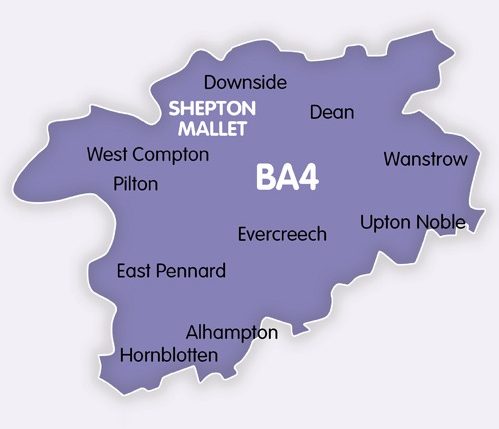Shepton Mallet
Shepton Mallet
Shepton Mallet is a market town and civil parish in Somerset, England, some 16 miles (26 km) south-west of Bath, 18 miles (29 km) south of Bristol and 5 miles (8.0 km) east of Wells. It had an estimated population of 10,810 in 2019. Mendip District Council was based there. The Mendip Hills lie to the north and the River Sheppey runs through the town, as does the route of the Fosse Way, the main Roman road between north-east and south-west England. There is evidence of Roman settlement. Its listed buildings include a medieval parish church. Shepton Mallet Prison was England's oldest, but closed in March 2013. The medieval wool trade gave way to trades such as brewing in the 18th century. It remains noted for cider production. It is the closest town to the Glastonbury Festival and nearby the Royal Bath and West of England Society showground.
The name Shepton derives from the Old English scoep and tun, meaning "sheep farm"; the Domesday Book of 1086 records a settlement known as Sceaptun in the hundred of Whitstone. The current spelling is recorded at least as far back as 1496, in a letter from Henry VII. The second part of the name derives from that of the Norman family of Malet. Gilbert Malet, son of William Malet, Honour of Eye, held a lease from Glastonbury Abbey around 1100. The second letter "l" appears to have been added to the spelling in the 16th century.
Archaeological investigations have found evidence of prehistoric activity in the Shepton Mallet area, with large amounts of Neolithic flint and some pottery fragments of the late Neolithic period. Two barrows on Barren Down, to the north of the town centre, contained cremation burials from the Bronze Age; another Bronze Age burial site contained a skeleton and some pottery. The remains of Iron Age roundhouses and artefacts such as quernstones and beads were found at Cannard's Grave, as was a probable Iron Age farming settlement at Field Farm. Nearby countryside provides evidence of Iron Age cave dwellings in Ham Woods to the north-west, and several burial mounds at Beacon Hill, a short distance to the north.
Shepton Mallet lies in the southern foothills of the Mendip Hills. The area rests geologically on Forest Marble, Blue Lias and Oolitic limestone.
Contact us if you would like to advertise in this issue.


